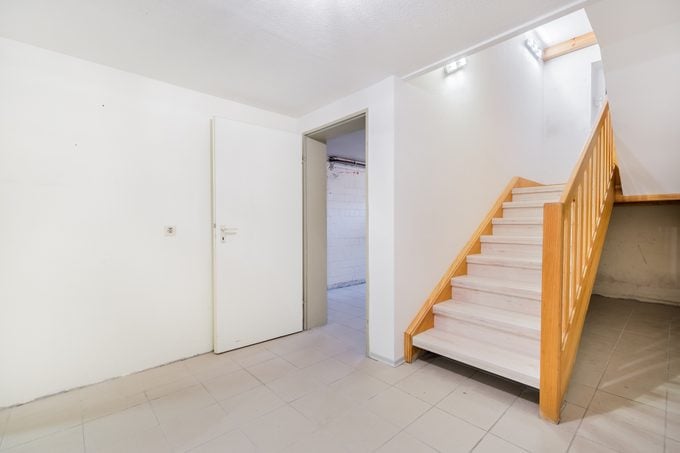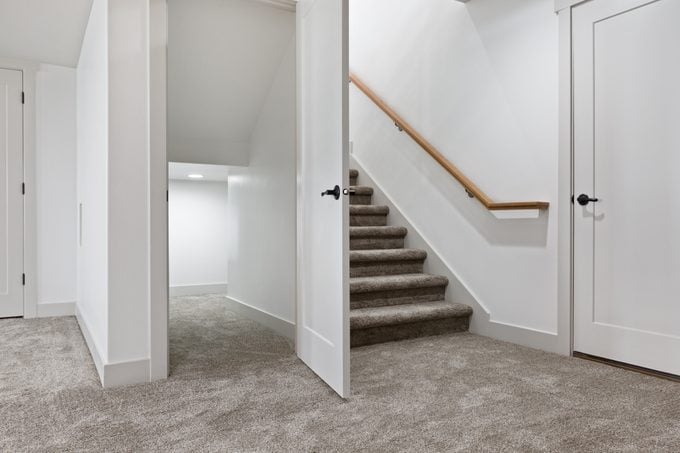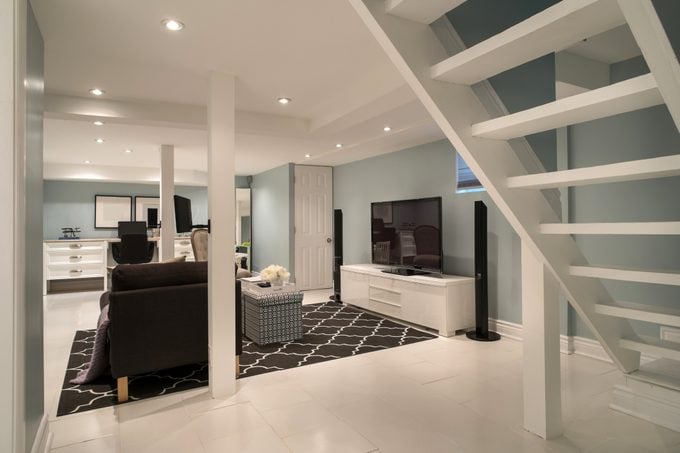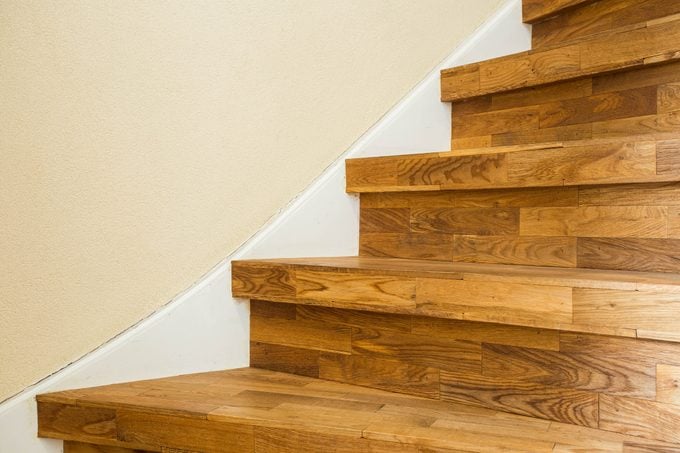What To Know About Finishing Basement Stairs
Updated: Feb. 02, 2023

Basement stairs need protection from foot traffic and moisture. When deciding how to finish your basement stairs, you've got plenty of great options.
The quality of a basement stairway usually matches the quality of the basement itself. An unfinished basement used primarily for storage likely has a straight, steep stairway with open treads, or perhaps a spiral staircase. A finished basement usually features a more sophisticated staircase with closed treads, and maybe even a landing.
A basement staircase is almost always more functional than decorative. That means it’s typically made from wood or plywood, without ornate details or extra-long treads. Though it’s basic, it still needs to be finished to avoid ending up stained, slippery and bug-infested, like the one I rebuilt for my neighbor several years ago.
The climate in a typical basement eliminates one finishing option common for upper-story staircases — natural fiber carpet. But you can use synthetic carpet.
Most people will choose a paintable finish, however, because it’s easy and inexpensive. Paint or a clear finish can also look great, but both are slippery. For safety’s sake, it’s worth it to put extra energy into addressing this issue.
On This Page
Unfinished Basement Stairs Basics
When you’re pondering your basement staircase finishing project, think about the following:
- Material: Pine, fir and oak are the most common tread, riser and railing materials. All need paint or a durable clear finish.
- Open or closed: The space between successive treads may be left open — common with exterior staircases — or filled in with a wooden riser. Risers must be finished along with the treads.
- Tread nosing: Wood treads typically feature a rounded front edge, called nosing. If you’re finishing a plywood staircase with hardwood, you often must add the nosing.
- Railing: Most basement staircases hug the wall on one side and have a railing on the other. The railing usually isn’t elaborate, but it can be. Either way, it needs finishing along with the staircase itself.
Considerations When Finishing Basement Stairs
If you only use your unfinished basement occasionally, you might be tempted to leave the staircase unfinished. You might even get away with it. But if you’re down there with any regularity, finishing the staircase is a must to protect it from foot traffic, and the improvement in appearance is a bonus.
If you’re planning to finish your basement stairway, here are some things to think about:
- Existing flooring: You’ll probably want the staircase to tie into what you have. Practically any floor covering works on stairs, including hardwood, laminate or vinyl. You can also install carpeting, although for a basement it should be polyester, nylon, olefin or another synthetic material.
- Basement moisture conditions: The wetter your basement is, the more protection the stairs need. Paint or clear polyurethane are your best bets.
- Staircase usage: You need a less elaborate finish on a staircase leading to storage than one leading to a living space. If the basement is well-heated, synthetic carpeting can be a nice touch that allows people to go up and down comfortably without shoes.
Best Ways To Finish a Basement Staircase
For a wooden basement staircase, painting is your best finishing option. Use a good quality porch and floor enamel for the treads and risers and acrylic enamel for the railings.
Painting is DIY-friendly, color choices give you design flexibility, and paint provides good resistance to moisture, mold and foot traffic. When the paint wears out or you get tired of the color, simply repaint. If the treads or railing are oak or fir, two or three coats of clear polyurethane offer good protection and highlight the natural wood tones.
Other finishing techniques aren’t quite as easy, but most are still DIY-friendly:
- Carpeting: You can stretch a single runner the length of the staircase and secure it with tacks or tack strips, or carpet each tread and paint the risers. Either way, you’ll have to paint exposed parts of the steps and the railing or cover them with clear finish.
- Hardwood: If you have engineered wood flooring in the basement, it makes sense to install the same flooring on the stairs. This is a job best left to the flooring installer.
- Vinyl: Luxury vinyl flooring is waterproof, making it a great choice for a basement floor. You can also install it on stairs, but it needs to be glued to the treads to prevent it from slipping off. If you do this, you’ll also need to install nosing, available from most flooring dealers.
Basement Stair Ideas
The possibilities for basement stairways are as varied as the people who use them. Here are a few examples:
Floor-color matching paint

The treads are painted light gray to match the tile on the basement floor, and the railing coated with a clear finish to bring out the natural wood element.
Cozy carpet

Protected by a wall on both sides, this staircase features the same carpet as the basement floor, providing a comfy trip between floors for bare feet.
Simple utility steps

No need for anything fancy for this utility basement. All parts of the staircase are painted to protect the wood from moisture.
A touch of hardwood

Hardwood on basement stairs? Why not? Just make sure you use an engineered product rated for below-grade installations.
